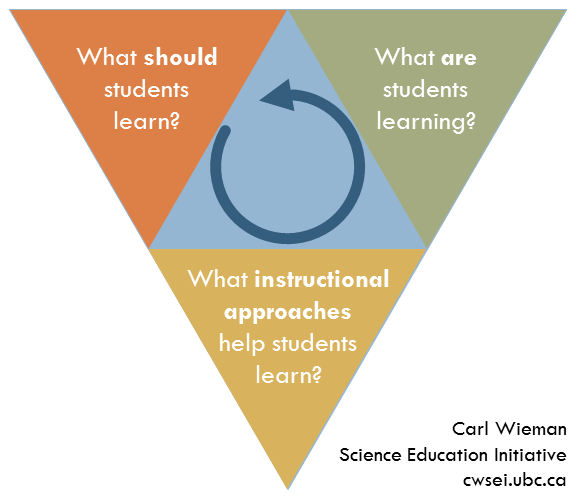I’ve spent time in that circle of Hell called “marking” (or “grading” as they call it here in the U.S.) My past is filled with stacks of math exams full of multi-step problems and astronomy exams with essays about the nature of science. The only respite from the drudgery of marking are the answers so absurdly incorrect it makes you laugh or the answers that are exactly what you’re looking for – check, check, check-check, check, check, perfect! 10/10.
Happily, I don’t have to mark exams anymore, but I still have an chance to get the tiny squirt of adrenaline that comes from assessing those “exactly what you’re looking for” answers.
I teach a teaching and learning course in the Center for Teaching Development at UCSD called The College Classroom to graduate students and postdocs. Their last assignment is a “microteaching experience.” Traditionally, this involves developing a lesson for a class they might teach someday, delivering that lesson to their fellow students and then getting feedback from their peers and instructors. That’s is a good way to assess the ability to lecture, maybe even the ability to orchestrate some active learning into the lecture, but that’s still only one part of “teaching.” What about all the things that happen before class and after class?
Instead, we ask the students to create lesson plan for a 50- or 80-minute class. It should contain
- learning outcomes
- pre-class tasks like readings, watching videos, exploring websites with clear guidance about what to focus on
- pre-reading quiz to assess the pre-class tasks
- a skeleton of the lesson, including 3-5 peer instruction (“clicker”) questions but excluding the PowerPoint slides with all content – I don’t want them wasting their time making pretty slides they may never use
- several assessment questions that could appear in homework or on the exam
For their presentation, we meet in small groups — me, the TA, and 3 of them — and I ask them to pretend they’re sitting in the coffee room with a few of their colleagues, describing this awesome lesson they’ve planned. They’ve got less than 10 minutes and they should assume everyone present knows the content and can concentrate on the pedagogy. (“In other words, don’t teach us the chemistry. Assume we know it. Tell us how you’ll teach it and why that’s a good approach.”)
When I assign the microteaching task a few weeks before the end of the course, I give them a lesson plan rubric (PDF). It’s using this rubric to assess their presentations that I get those “check, check, check-check, check” moments of satisfaction.
As an alumni of the Carl Wieman Science Education Initiative at the University of British Columbia, I adhere to Carl’s 3-pillared model of course design:

Step 1. Set the learning outcomes What should students learn? What should they be able to do to demonstrate their understanding and mastery of the concepts and skills? These outcomes are statements that complete the sentence, “By the end of this lesson/unit, you’ll be able to…” and start with a nice, juicy verb selected from Bloom’s taxonomy of the cognitive domain.
Step 2. Decide how you’re going to teach What instructional approaches help students learn? What does the literature tell you about how people learn those skills and concepts? I’m a strong supporter of lecture…in 10-15 minute snippets, when the students are prepared to learn because you’ve primed them through student-centered activities like peer instruction, in-class worksheets and demonstrations, or pre-reading.
Step 3. Assessment What are students learning? Create formative and summative assessments that evaluate students’ mastery of the learning outcomes.
Two important things to notice about this approach:
- When it works, it works great. Here’s what I wanted students to know, here’s how I taught it, here’s what they did on the exam. Check, check, check.
- When it doesn’t work, it still works great. If students don’t perform like you’d hoped, the pillars help you diagnose the “failure mode,” as my engineering friends would say. Maybe it was a bad exam question that didn’t assess what you wanted to teach. Maybe you didn’t teach it in a way that helped them learn. Maybe you set an unrealistic learning outcome. In other words, you can re-trace through the course design cycle to find out what went wrong.
The College Classroom Microteaching Presentations
When the participants in The College Classroom present their lesson plans, it’s great when I can identify this nice, tight package of learning outcomes, instruction and assessment – check, check, check! I make sure I tell them, hoping that positive feedback will motivate them to do it again. As with marking exams, it’s the incomplete lessons that are difficult to assess. Fortunately, 3-pillared approach together with the rubric makes it easier for me to give targeted, goal-directed formative feedback.
